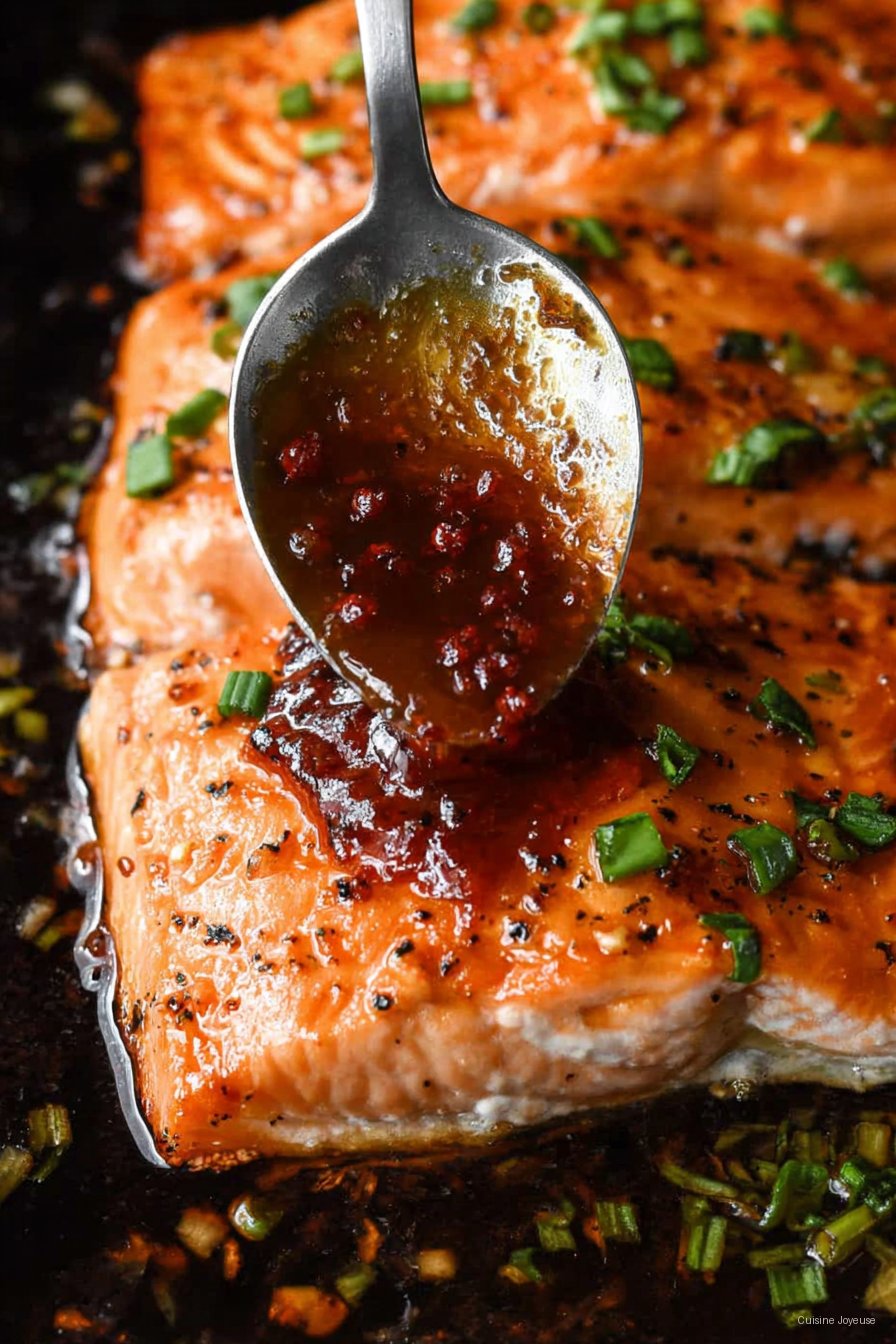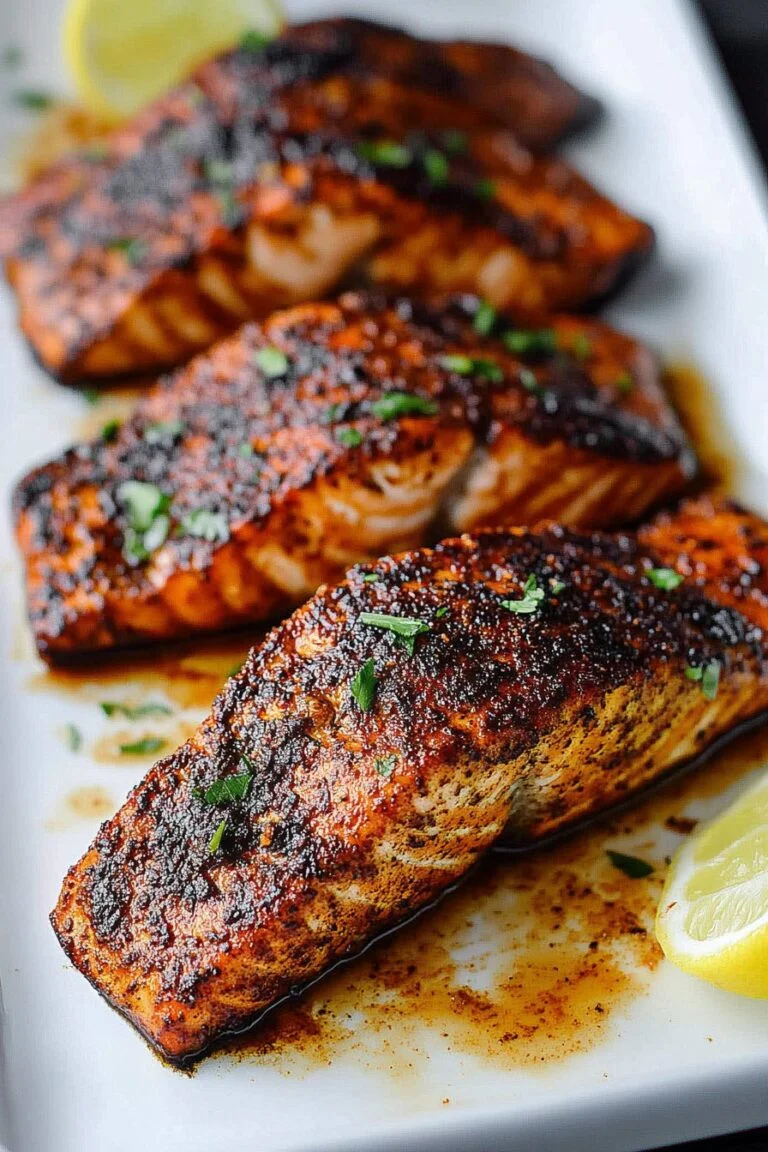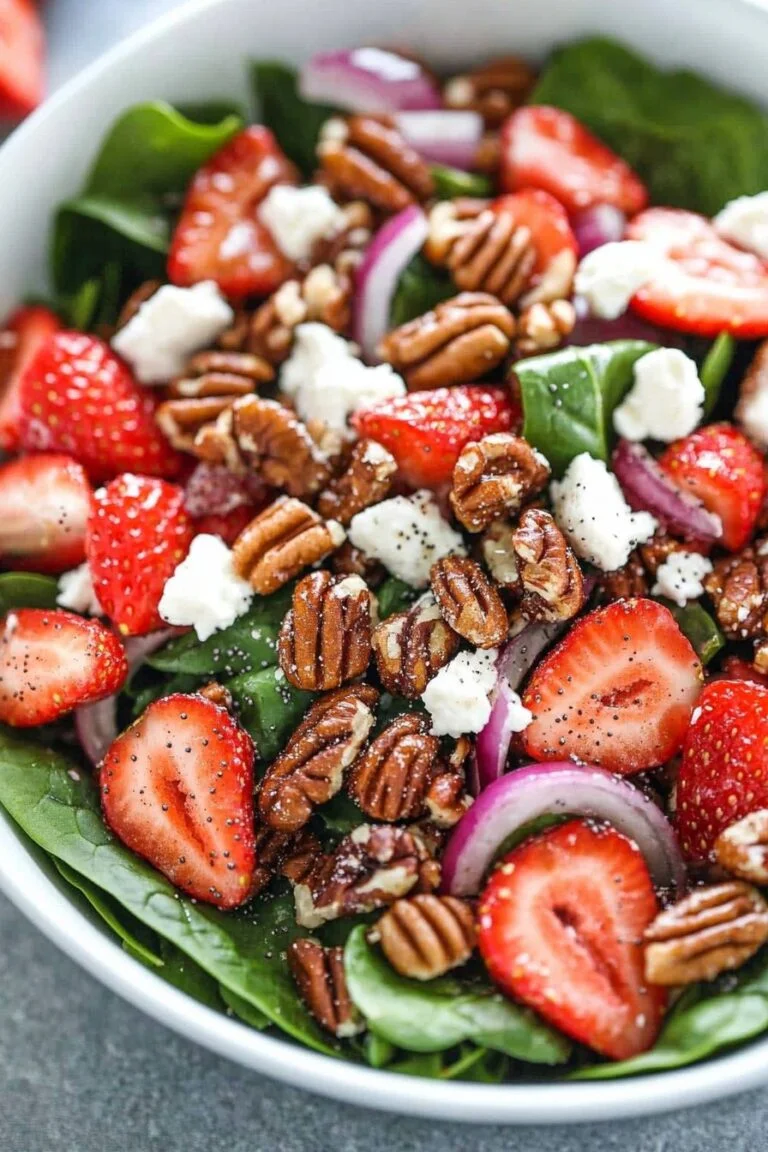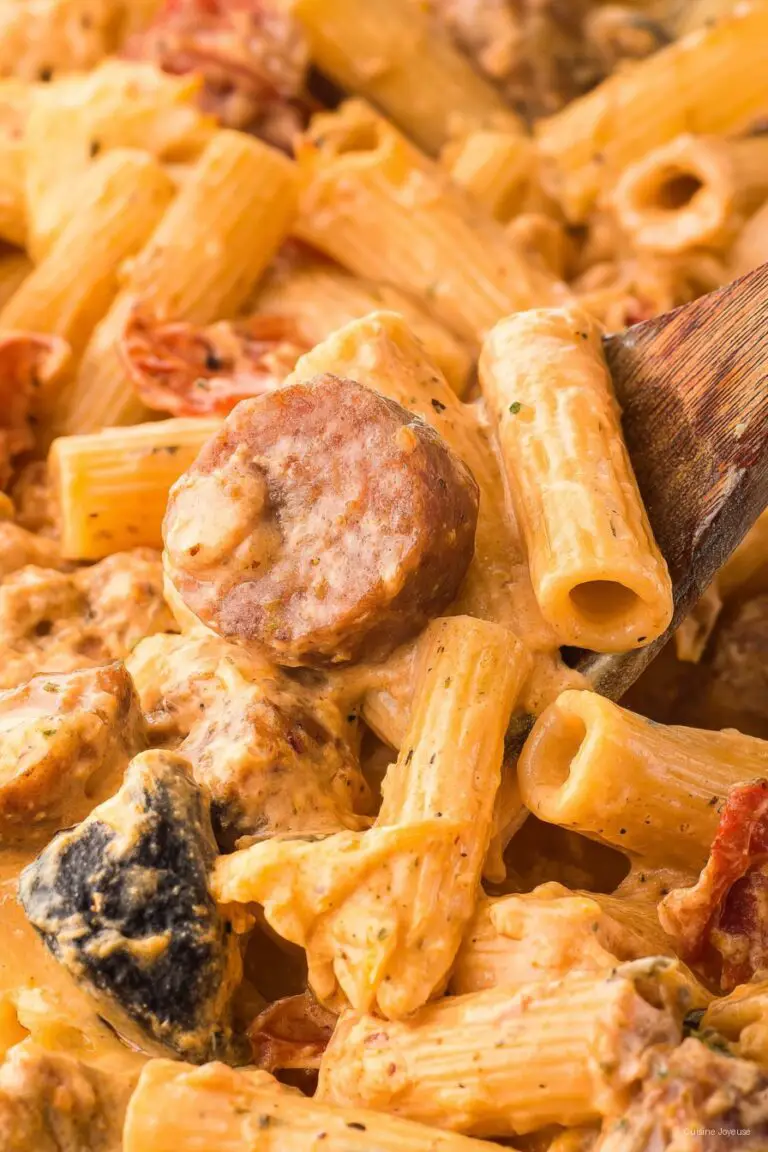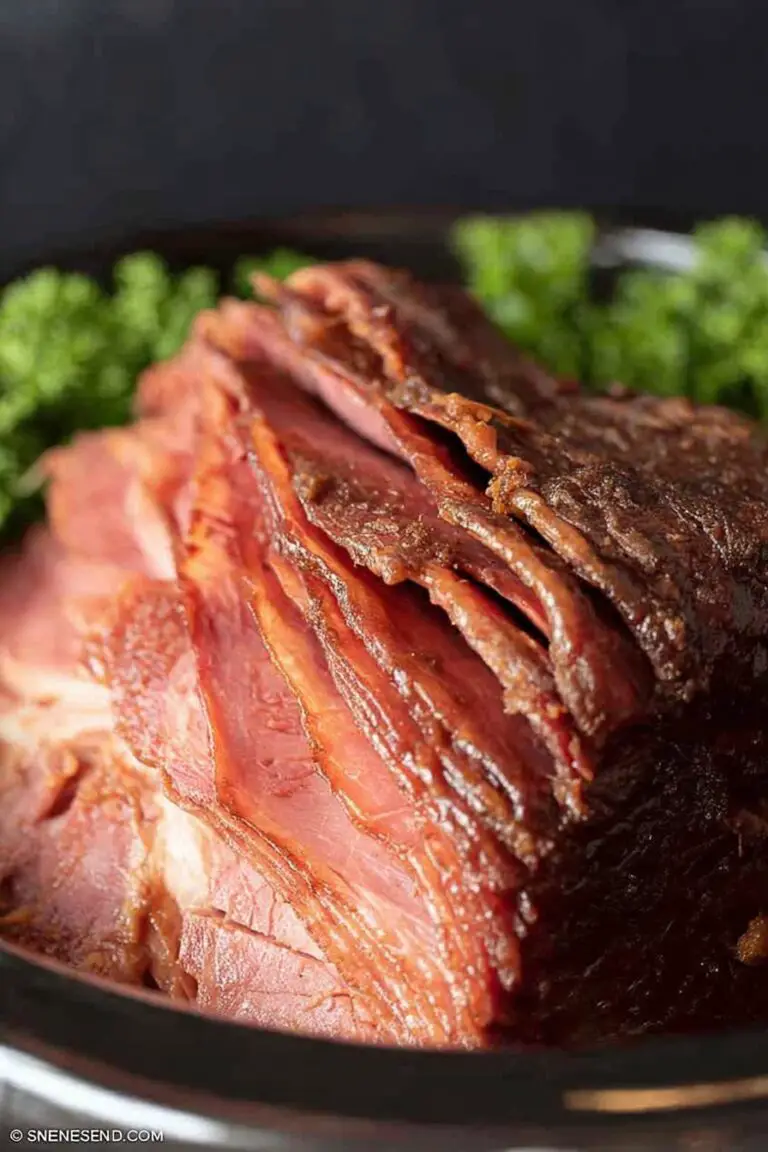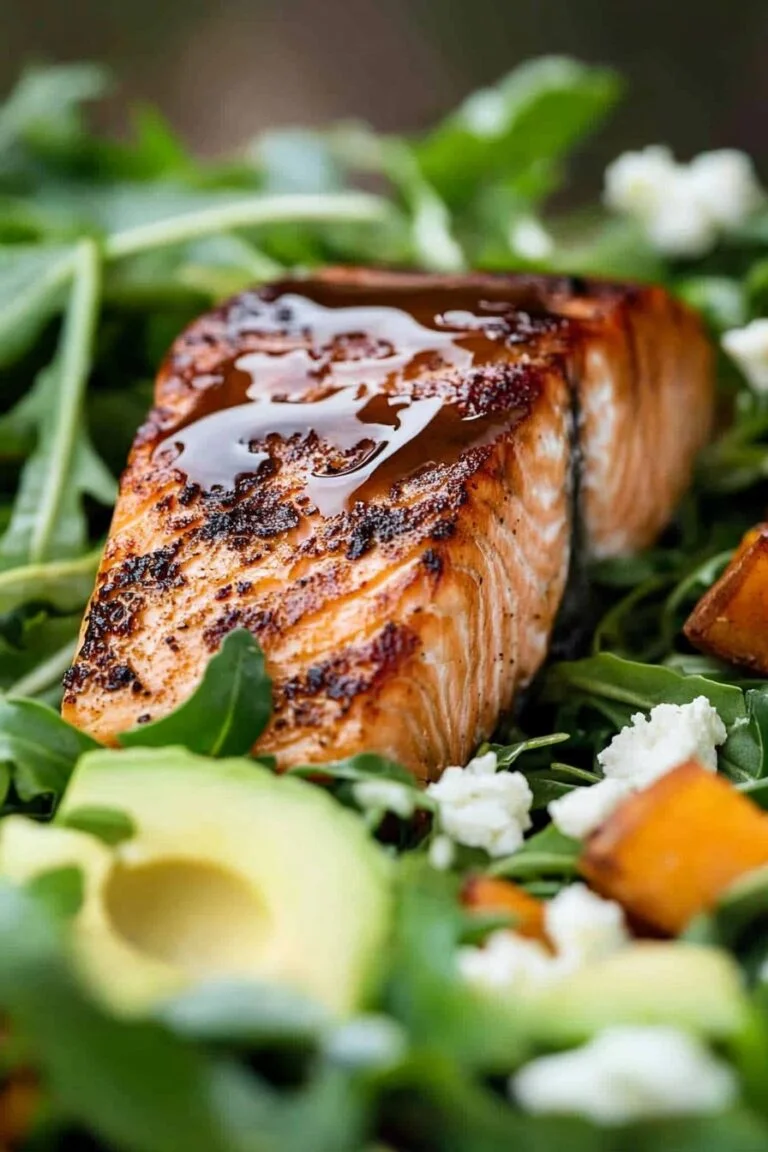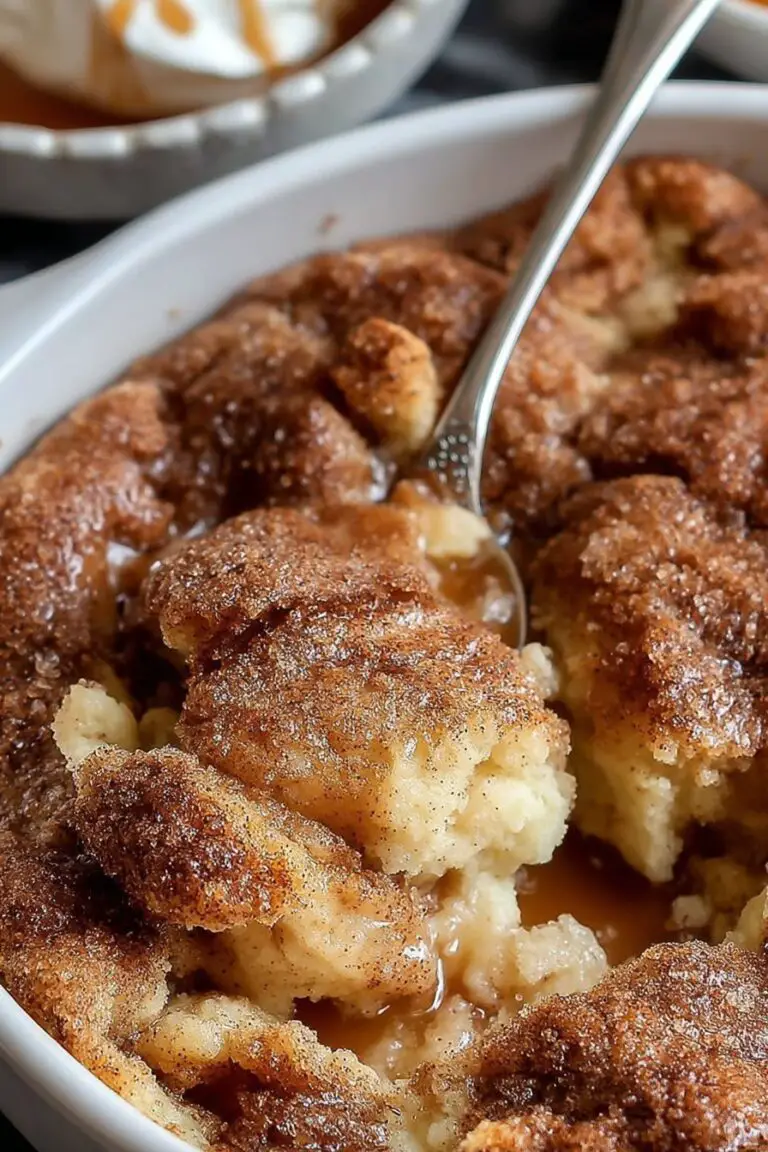Brown Sugar Soy Sauce Salmon
I make this Brown Sugar Soy Sauce Salmon when the day got away from me and the fridge is giving me that quiet, unimpressed stare. It started as a total wing it experiment after a long commute and a very dramatic rice cooker, and now it is the thing my sister asks for whenever she pops round. The glaze is sticky, salty sweet, a little glossy like a good raincoat; it makes you look like you planned dinner. Honestly, I once cooked this in a rental kitchen with a wobbly burner and a teaspoon that was actually a coffee scoop, and it still turned out lovely.
Why I keep making this on repeat
I make this when I want dinner to behave. My family goes a bit wild for this because it tastes like takeout but cleaner, and the salmon stays juicy even if I get distracted by the group chat. Also, it is five minute sauce magic. I used to struggle with glazes that either burned or tasted flat, but this one is forgiving. If it bubbles too fast, just nudge the heat down; the sugar chills out.
And if I am honest, it is the kind of meal that lets me chat while I stir. I can open mail, sip something cold, tell the dog he is very brave for barking at the dishwasher, and still get dinner on the table. Small win, big flavor.
Ingredients I actually use
- 500 g salmon fillet, skin on or off, cut into 2 pieces if thick
- 3 tablespoons soy sauce, regular or low sodium works fine (I like Kikkoman, but any decent bottle will do). If you want a deep dive on soy types, this guide is handy: Kikkoman
- 2 tablespoons brown sugar, packed. Light or dark is fine; dark gives a hint more molasses
- 1 tablespoon rice vinegar or apple cider vinegar when the rice one has played hide and seek
- 1 tablespoon water to loosen the sauce
- 1 teaspon grated fresh ginger or a pinch of ground ginger when you cannot be fussed
- 1 small garlic clove, minced. I sometimes use garlic paste because dishes
- 1 teaspoon sesame oil, optional but I love the warm nuttiness
- 1 to 2 teaspoons neutral oil for the pan
- A squeeze of lemon or lime, to finish
- A handful of sliced scallions and toasted sesame seeds for serving
Substitutions I make with zero guilt: honey instead of brown sugar if I am out, tamari for a gluten free option, and if the salmon is not looking great I use trout or even firm tofu. My grandmother always insisted on a specific brand of soy, but honestly any version works fine if it tastes good to you.
Okay, let us cook
- Pat the salmon dry and lightly season with a pinch of salt. Not too much, the soy will cover it. If the fillet is very thick, cut it into two even pieces so they cook at the same pace.
- In a small bowl, stir together soy sauce, brown sugar, rice vinegar, water, ginger, garlic, and the sesame oil. The sugar will dissolve quickly; this is where I usually sneak a taste and adjust. Too salty Try another splash of water or a tiny pinch more sugar.
- Heat a nonstick skillet over medium heat with the neutral oil. When it looks shimmery, place salmon in, skin side down if you have the skin on. Let it go 3 to 4 minutes without moving it. It will feel like nothing is happening then suddenly it releases, almost like a friendly goodbye.
- Flip the salmon gently. Pour the sauce around it and over it. It will bubble and smell like a cozy little noodle bar. Spoon the sauce over the top as it reduces for 2 to 3 minutes. Do not worry if it looks a bit weird at this stage, it always does.
- When the salmon flakes with a fork but is still glossy in the center, cut the heat. The sauce should be syrupy and clingy. If it is too thick, add a tablespoon of water and swirl the pan. Actually, I find it works better if you move the pan off the burner for that swirl.
- Squeeze a little lemon or lime over the salmon, toss on scallions and sesame, and serve. On second thought, save a spoonful of glaze to drizzle at the table because someone will ask.
Alternate path if the stove is busy: nestle the salmon on a foil lined sheet pan, brush with half the sauce, bake at 200 C for 8 to 10 minutes, then brush on the rest and broil 1 minute. I said skillet was essential, but if you are short on time, the oven version is grand.
Notes I learned the hard way
- If the sauce reduces too fast, it can taste a bit bitter. Lower the heat and add a splash of water. I once tried rushing this and regretted it because the sugar went cranky.
- Do not marinate the salmon in the soy mix for more than 30 minutes, or it firms up in a slightly odd way. A quick brush is enough. I used to marinate for hours and wondered why it was tight.
- Skin on gives you a little safety net. It keeps moisture in, and if it sticks, the skin takes the hit not the flesh.
- Use fresh ginger if you can. Powdered is fine in a pinch but it makes the sauce a touch dusty, if that makes sense.
Variations I have tried
- Chili kick: add 1 teaspoon of chili paste or a few chili flakes to the sauce. Nice warmth, not a scorcher unless you want it to be.
- Orange twist: swap the water for orange juice and add a little zest. Bright and breakfasty in the best way.
- Maple miso experiment: I tried replacing the sugar with maple and adding a spoon of white miso. It tasted fine but was a bit too salty and sticky on the wrong side of sticky, so maybe save the miso for soup.
- Garlic butter finish: whisk a small knob of butter into the sauce off heat. Glossy and lush, very date night.
Gear I use without fuss
- Nonstick skillet, about 25 to 28 cm. I call it essential, yet if you only have stainless, preheat well and do not move the fish too soon.
- Fish spatula if you own one. If not, two forks work like a charm and make you feel slightly clever.
- Small bowl and a spoon for the sauce, nothing fancy.
No rice cooker No worries. Stovetop rice is simple, and this tutorial is solid if you want a refresher: how to cook rice. For sustainable salmon choices, I like checking Seafood Watch before I shop.
How I store leftovers
Leftover salmon goes into an airtight container with any extra glaze spooned over the top. It keeps 2 days in the fridge, probably 3 if you are careful. Though honestly, in my house it never lasts more than a day. Reheat gently on low heat or eat cold over crunchy greens, which I love on a warm day.
How I like to serve it
Steamy rice with a sprinkle of furikake if I have it, cucumber ribbons dressed with rice vinegar, and a quick pan of garlicky green beans. My little tradition is to serve a wedge of lime at the table, because that tiny spritz makes the glaze sing. Sometimes, when I am feeling a bit extra, I slide the salmon over sesame noodles and call it a night. Yall, it is very satisfying.
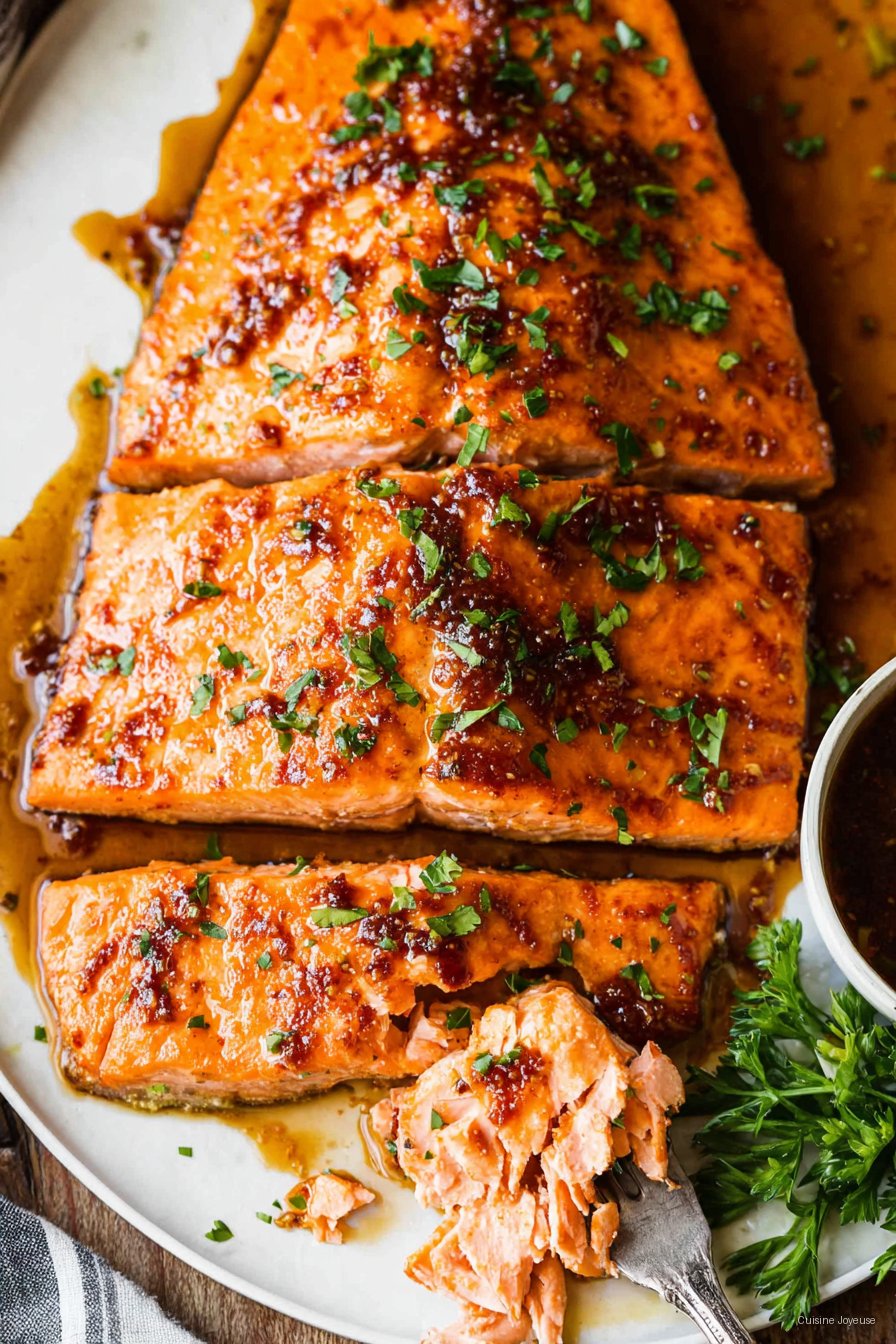
Pro tips from my goofs
- I once tried cooking on high to get it done faster and the sauce scorched, the sugar went past caramel to cranky. Medium heat wins here.
- Pat the fish dry. Any extra moisture dilutes the glaze and makes it spit at you like a grumpy cat.
- Start the sauce in a separate pan if you are nervous. Reduce it to a thin syrup, then pour over just cooked salmon. Less drama, same shine.
- If you bake the salmon, do not add all the sauce at once. Half then half, or it slides off into a puddle and you will feel mildly betrayed.
FAQ I really get
Can I use frozen salmon
Absolutely. Thaw in the fridge overnight or in a sealed bag under cold water. Pat very dry. If it smells clean, you are good to go.
Is it too sweet for dinner
Nah. The soy and vinegar balance it out. If you are sugar shy, use 1 tablespoon to start, then taste and tweak.
Can I make the sauce ahead
Yes, the sauce can be mixed in the morning and kept in the fridge. Give it a stir before using. I sometimes double it and keep a jar for quick stir fry situations. On second thought, label it, or you will forget what it is and think it is iced coffee, ask me how I know.
What if I only have skinless salmon
No problem. Sear gently and do not move it too soon. A thin film of oil and patience is the trick.
How do I know when it is done
It should flake with a fork and be slightly translucent in the very center. If you like it more cooked, give it another minute. I tend to think it tastes better just shy of fully opaque.
Can I use another protein
Sure thing. Trout, cod, shrimp, or firm tofu all play nice with this glaze. With tofu, press it first to remove extra water, then sear for color before saucing.
Small digression, because why not I once made this while playing an old jazz playlist, and now my brain thinks saxophone equals salmon night. So if you hear a sax and start craving dinner, that is on me. Anyway, enjoy.

